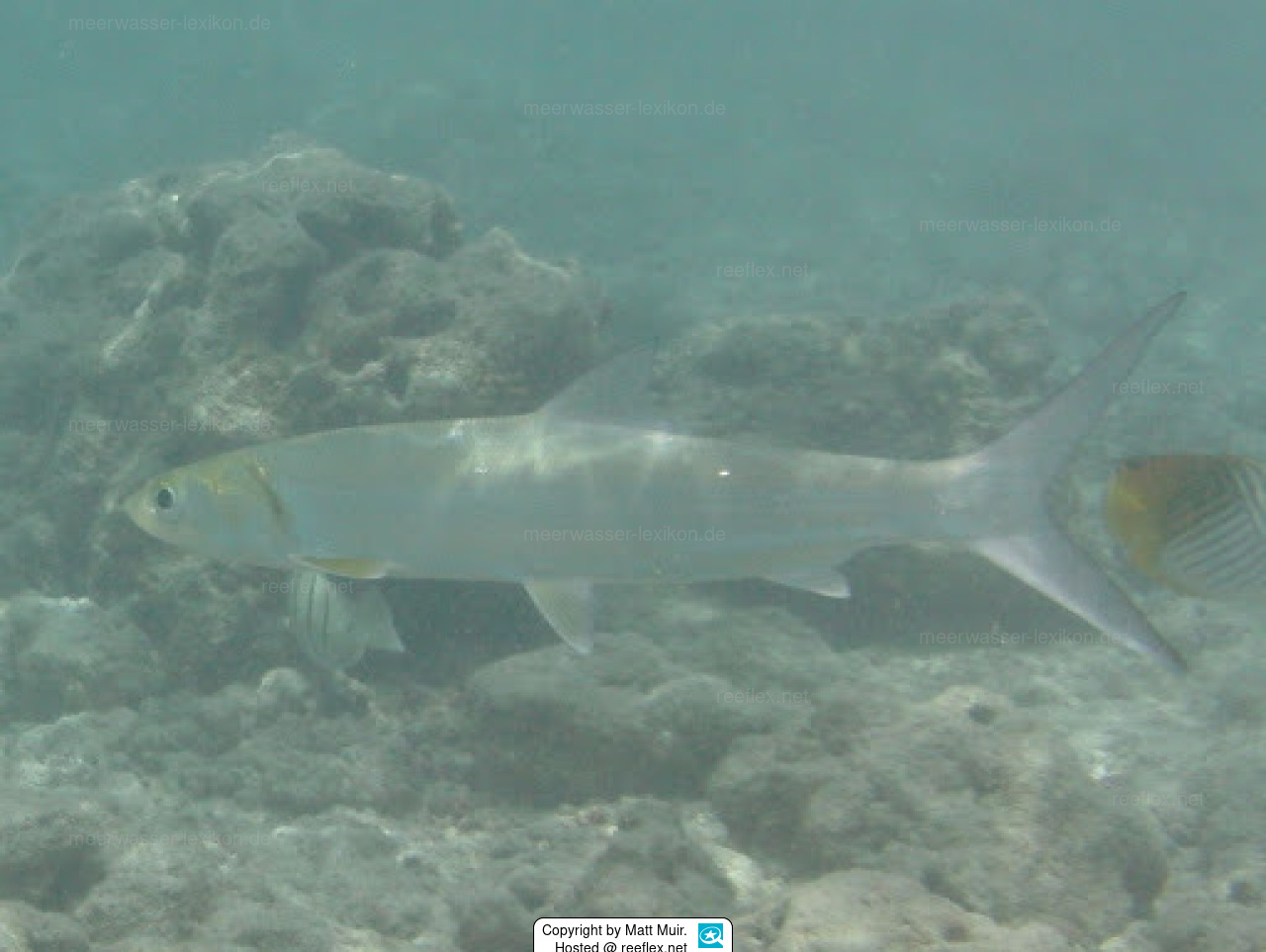Info
The Hawaiiian ladyfish is a long, slender, silvery fish with a single dorsal fin in the middle of the back, a forked tail, a large eye, and a moderately large mouth.
This schooling fish species lives in coastal bays, harbors, and estuaries and occasionally enters freshwater.
The dorsum of the ladyfish is blue or greenish gray, the belly is silvery, and the fins sometimes have a slight yellow tinge.
Elops hawaiensis is very similar to the Ladyfish Elops machnata and differs in having more vertebrae (66 -70 versus 6 0- 66).
Although some authors have used the structure of the maxillary teeth to distinguish the two species, this characteristic changes with growth.
Spawning of the species occurs in the sea, and the fertilized eggs as well as the larvae are pelagic.
The transparent Leptocephalus larvae are elongate, leaf-like, and have forked tails.
Larvae drift into shallow coastal waters and estuaries where they develop to sexual maturity, and during this time juveniles may venture deeper into coastal rivers.
Etymology: "Elops" comes from the Greek word "ellops" meaning a type of "snake", referring to the long, slender body of the ladyfish.
Synonyms:
Elops australis Regan, 1909
Elops hawaiiensis Regan, 1909
Special thanks for the first photo of Elops hawaiensis goes to Matt Muir.
This schooling fish species lives in coastal bays, harbors, and estuaries and occasionally enters freshwater.
The dorsum of the ladyfish is blue or greenish gray, the belly is silvery, and the fins sometimes have a slight yellow tinge.
Elops hawaiensis is very similar to the Ladyfish Elops machnata and differs in having more vertebrae (66 -70 versus 6 0- 66).
Although some authors have used the structure of the maxillary teeth to distinguish the two species, this characteristic changes with growth.
Spawning of the species occurs in the sea, and the fertilized eggs as well as the larvae are pelagic.
The transparent Leptocephalus larvae are elongate, leaf-like, and have forked tails.
Larvae drift into shallow coastal waters and estuaries where they develop to sexual maturity, and during this time juveniles may venture deeper into coastal rivers.
Etymology: "Elops" comes from the Greek word "ellops" meaning a type of "snake", referring to the long, slender body of the ladyfish.
Synonyms:
Elops australis Regan, 1909
Elops hawaiiensis Regan, 1909
Special thanks for the first photo of Elops hawaiensis goes to Matt Muir.







 Matt Muir, Alaska
Matt Muir, Alaska




